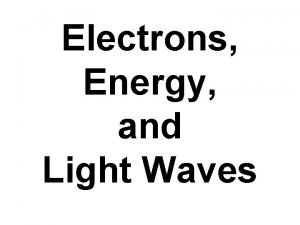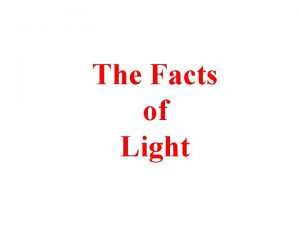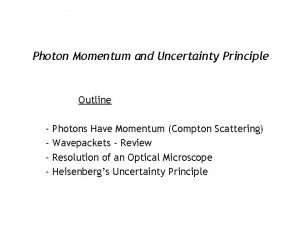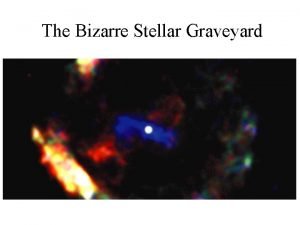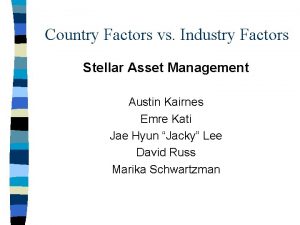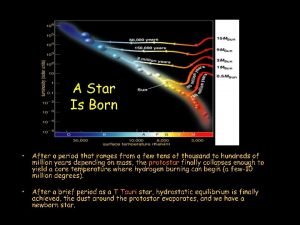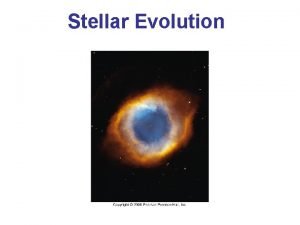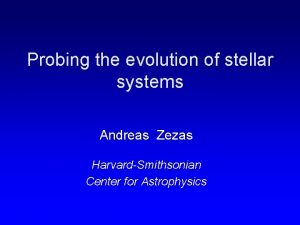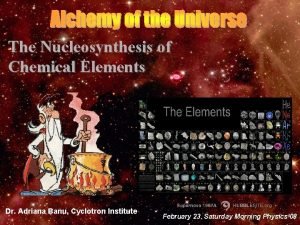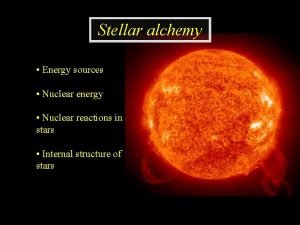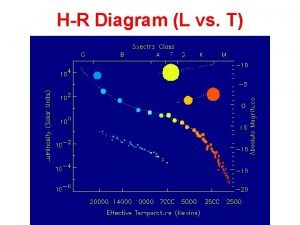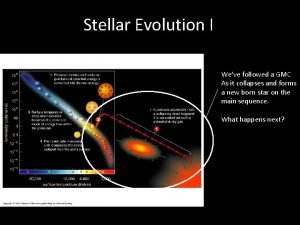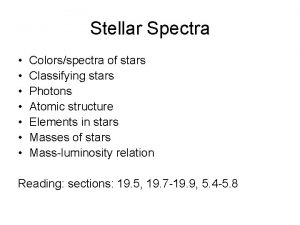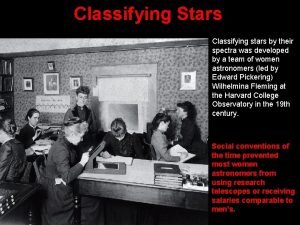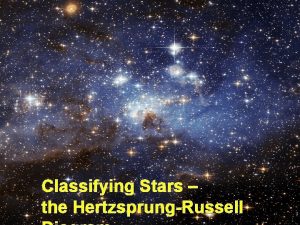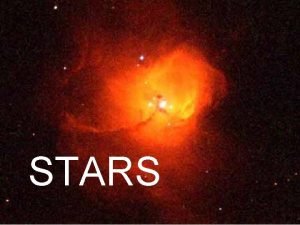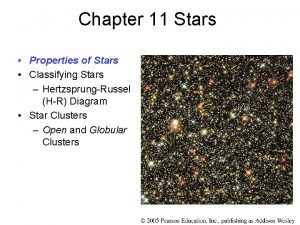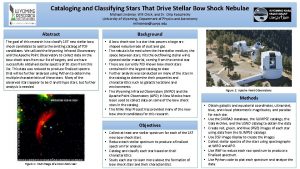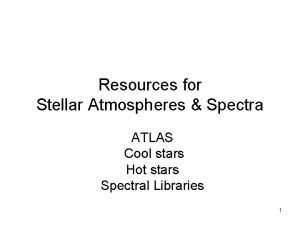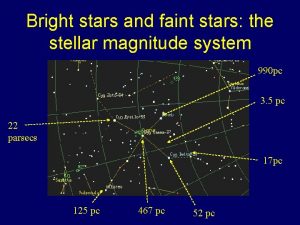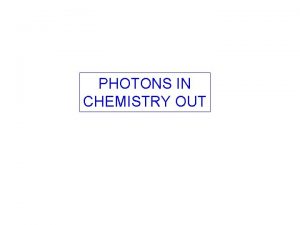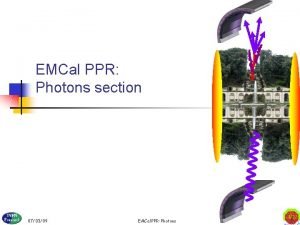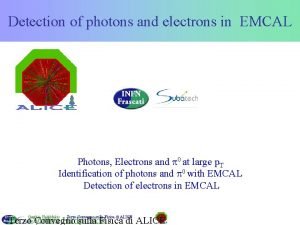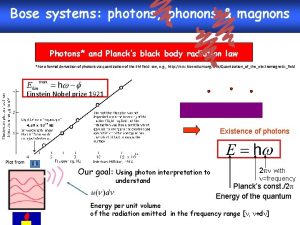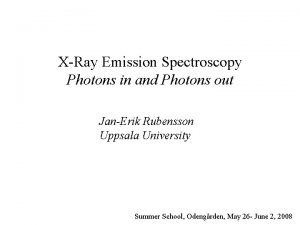Stellar Spectra Colorsspectra of stars Classifying stars Photons

























- Slides: 25

Stellar Spectra • • Colors/spectra of stars Classifying stars Photons Atomic structure Elements in stars Masses of stars Mass-luminosity relation Reading: sections: 19. 5, 19. 7 -19. 9, 5. 4 -5. 8

A star’s color depends on its surface temperature

Stars are assigned a `spectral type’ based on their spectra • The spectral classification essentially sorts stars according to their surface temperature. • The spectral classification also uses spectral lines.

Spectral type • Sequence is: O B A F G K M • O type is hottest (~25, 000 K), M type is coolest (~2500 K) • Star Colors: O blue to M red • Sequence subdivided by attaching one numerical digit, for example: F 0, F 1, F 2, F 3 … F 9 where F 1 is hotter than F 3. Sequence is O … O 9, B 0, B 1, …, B 9, A 0, A 1, … A 9, F 0, … • Useful mnemonics to remember OBAFGKM: – Our Best Astronomers Feel Good Knowing More – Oh Boy, An F Grade Kills Me – (Traditional) Oh, Be a Fine Girl (or Guy), Kiss Me

Classifying stars • We now have two properties of stars that we can measure: – Luminosity – Color/surface temperature • Using these two characteristics has proved extraordinarily effective in understanding the properties of stars – the Hertzsprung-Russell (HR) diagram

HR diagram

HR diagram • Originally, the HR diagram was made by plotting absolute magnitude versus spectral type • Now, it’s better to think of the HR diagram in terms of physical quantities: luminosity and surface temperature

If we plot lots of stars on the HR diagram, they fall into groups

These groups indicate types of stars, or stages in the evolution of stars

Luminosity classes • • • Class Ia, b : Supergiant Class II: Bright giant Class III: Giant Class IV: Sub-giant Class V: Dwarf The Sun is a G 2 V star

The spectrum of a star is primarily determined by 1. 2. 3. 4. The temperature of the star’s surface The star’s distance from Earth The density of the star’s core The luminosity of the star

Photon energy • Up to now, we have been discussing the wavelength of light as determining it color • However, light comes in discrete packets called photons and the energy of each photon is set by its color or wavelength • From Einstein, we known that the photon energy is inversely proportional to its wavelength

Photon energy

Hydrogen atom Electron orbits around nucleus

Electron orbits From quantum mechanics, only certain orbits are allowed. Each orbit has a specific energy.

How atoms emit light

How atoms emit light • The emitted photon has an energy which is exactly the energy difference between the orbits that the electron had before and after. • Because only certain energies are allowed for the electron orbits, only certain energies of photons can be produced. We call these the spectral lines of hydrogen.

Spectral lines of hydrogen The length of each arrow determines the energy and therefore the wavelength of the photon emitted.

Spectral lines • Each element (hydrogen, helium, neon, mercury, iron, …) has its own particular set of energy levels and its own set of spectral lines. • Do demonstration (7 B 10. 10)

Uses of spectral lines • Because each element has it own unique pattern of spectral lines, the spectral lines from stars can be used to determine the composition, or the relative number of atoms of each elements, of the stars

Kirchhoff’s Laws

Absorption spectrum of a star

Composition of a typical star

Masses of stars • Spectral lines also allow us to measure the velocities of stars via the Doppler shift that we discussed in searching for extra-solar planets. Doppler shift measurements are usually done on spectral lines. • Essentially all of the mass measurements that we have for stars are for stars in binary systems – two stars orbiting each other. • The mass of the stars can be measured from their velocities and the distance between the stars.

Mass-Luminosity relation
 Energy planck's constant
Energy planck's constant Facts of light
Facts of light Gabriela barreto lemos
Gabriela barreto lemos Photons
Photons Do photons have momentum
Do photons have momentum The rwenzori mountains mary daniels is a student in england
The rwenzori mountains mary daniels is a student in england Masses in the stellar graveyard
Masses in the stellar graveyard Stellar asset management
Stellar asset management Hr diagram
Hr diagram Zero age main sequence
Zero age main sequence Stellar evolution
Stellar evolution Stellar evolution poster
Stellar evolution poster Stellar evolution
Stellar evolution Atmospheric heaven
Atmospheric heaven Stellar assessment
Stellar assessment Stellar wifi
Stellar wifi Stellar motion matlab
Stellar motion matlab Stellar
Stellar Iptv hosting
Iptv hosting Abundance of elements
Abundance of elements Stellar flux
Stellar flux Stellar saga
Stellar saga Stellar alchemy
Stellar alchemy Virgo stellar stream
Virgo stellar stream Stellar formation
Stellar formation Stellar evolution
Stellar evolution
